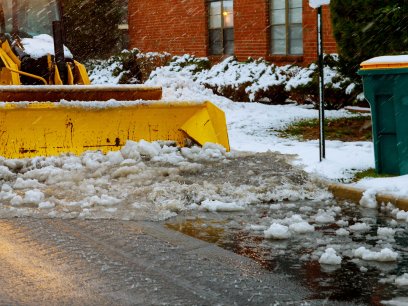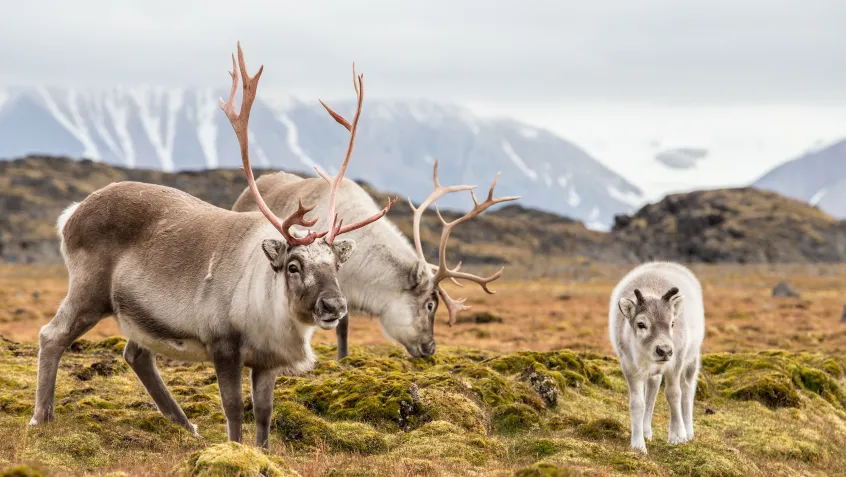
You probably recognize reindeer as the animals that help Santa Claus deliver gifts on Christmas Eve. The Alaska Department of Fish and Game (ADFG) even created a species profile page for the mythical flying creature.
However, reindeer (Rangifer tarandus tarandus) are quite real and live year-round in Arctic Alaska, Canada, China, Finland, Norway, Sweden, and Russia. Most reindeer in Alaska exist on the Seward Peninsula. These animals can only be owned and herded by Native Alaskans according to federal legislation. The reindeer found in Alaska are a different subspecies than the approximately 750,000 caribou (Rangifer tarandus granti) managed by the ADFG.
Reindeer and Native Alaskan Foodways
Caribou are native to Alaska and have helped shape the landscape with their migratory patterns. Reindeer, on the other hand, were introduced to Alaska from Siberia in 1892 to provide Native Alaskans with a reliable source of food and financial stability. There are traditional uses for nearly every part of the reindeer. Their meat and organs are used for food, tallow can be burned as a light source, antlers can be made into utensils, tools, and art, and their hides are used for clothing, blankets, and more.
The reindeer industry in Alaska grew to a population of more than 600,000 animals in the 1930s but has since declined to about 50,000. The number of reindeer decreased due to several factors including predators, reindeer straying from their herds, and issues with processing and logistics. However, reindeer remain an important local food source today.
The Difference Between Reindeer and Caribou
It is hard for most people to detect a visual difference between caribou and reindeer. Both male and female reindeer and caribou grow antlers. Both have large, snowshoe-like hooves that help them navigate Alaska’s wintery terrain. To add to the confusion: in Europe, caribou are called reindeer, but in Alaska and Canada this term is only used for semi-domesticated animals.
Many of the distinguishing traits of the two subspecies are thought to be the result of domestication. Alaskan reindeer are generally shorter, stouter, and more sedentary than caribou. They don’t migrate as far between wintering grounds and calving areas as caribou. Caribou are normally wild and skittish around humans, while selective breeding by herders has led domestic reindeer to become fairly tame.
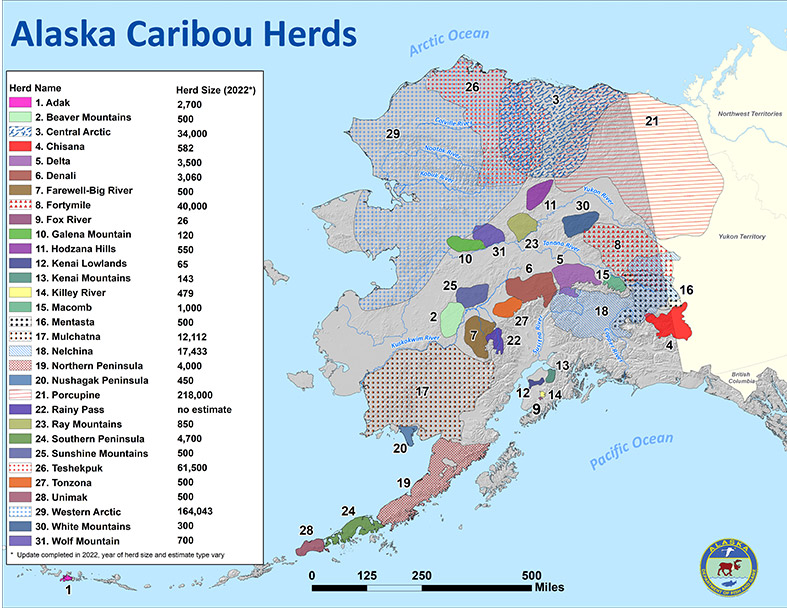
How Climate Change Affects Reindeer and Caribou
Both reindeer and caribou rely on lichen as their main food source in the winter. Alaska's lichen supply is threatened as the climate changes due to warmer and drier summers, increased wildfire activity, and extreme weather events. In fact, Alaska is one of the fastest-warming regions on Earth.
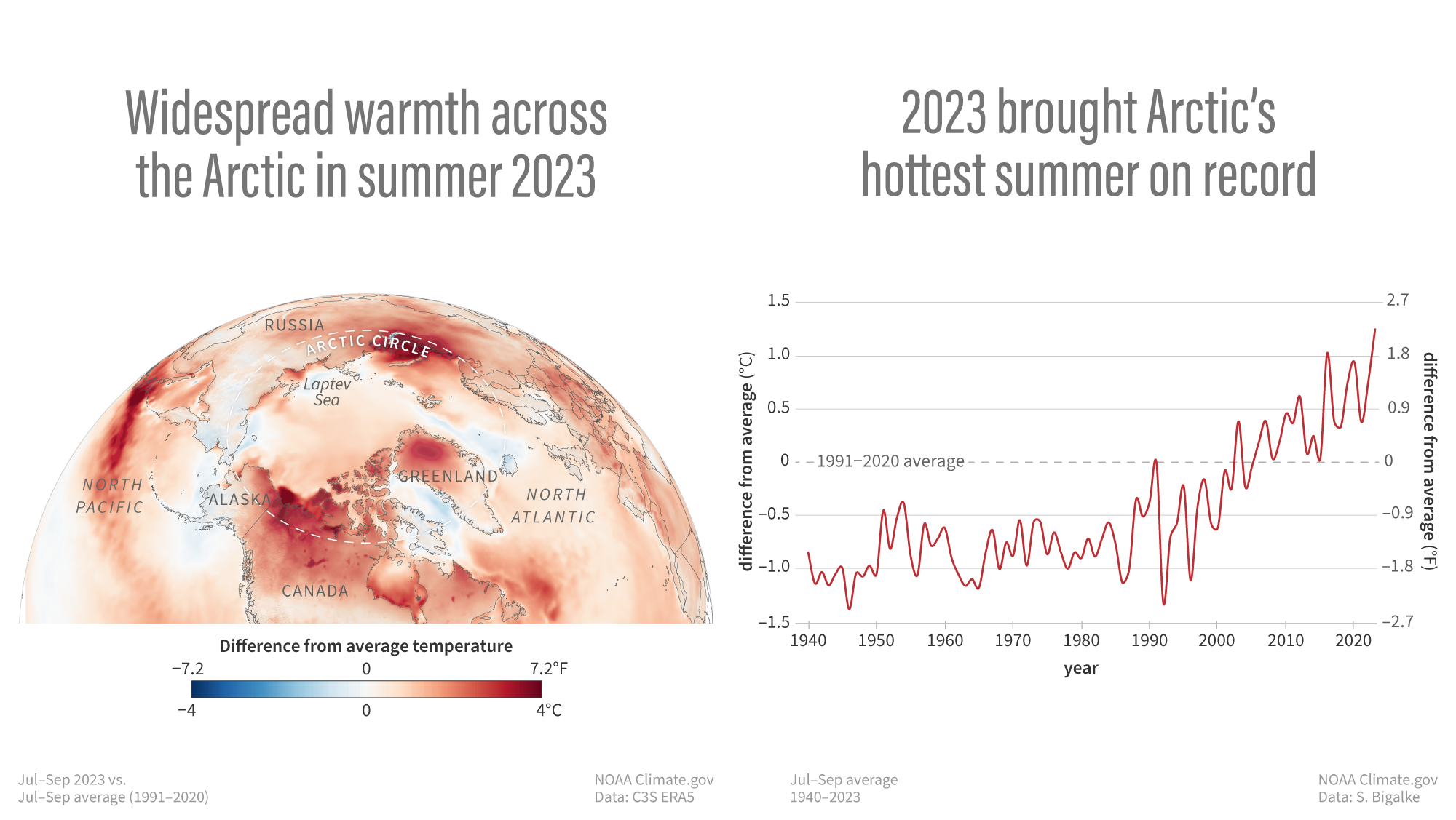
As the climate warms, shrubs are expanding into the tundra, sometimes replacing lichen. As their common food supply is disappearing, reindeer and caribou are forced to compete for the shrinking supply of lichen. Warmer weather can also result in increased parasites and insects like botflies that can cause reindeer and caribou to alter their behavior. Ice that melts too early in the season can cut off migratory routes for both subspecies.
Some reindeer are migrating away from their traditional herds with caribou, presenting herd management challenges for Native Alaskans and the ADFG. Declines in wild caribou and reindeer populations negatively impact the ecosystems they live in because they are a key species in the local food web, serving as the primary foragers that cycle nutrients from plants back into the soil. They are also a critical food source for predators like bears and wolves.
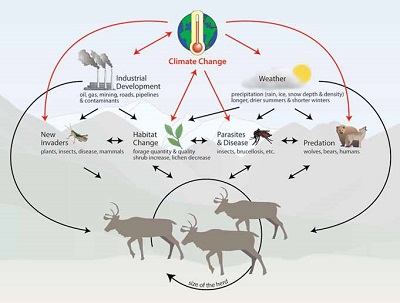
Take Action at Home to Reduce Climate Change Impacts in the Arctic
Globally, climate change is expected to continue to impact patterns of snow, ice, rain, temperature, wind, clouds, and seasonality where caribou and reindeer live. Changes in the Arctic also have implications for the lower latitudes, especially because Arctic sea ice helps regulate Earth’s climate.
Access NEEF’s climate change resources to learn more about the factors that can cause the planet to warm or cool and how they affect our health and the environment. You can help by taking action now to reduce your impact on the environment.
The National Park Service also recommends these easy steps you can take at home:
- Start a conversation about climate change. Many people don't talk about climate change because they underestimate others' level of interest in the topic.
- Conserve energy. Use LED lighting, smart thermostats, and high-efficiency appliances and turn off unnecessary lights.
- Reduce your consumption. Avoid buying unnecessary or single-use items in favor of reusable essentials. Sell, donate, or compost items you can no longer use.
